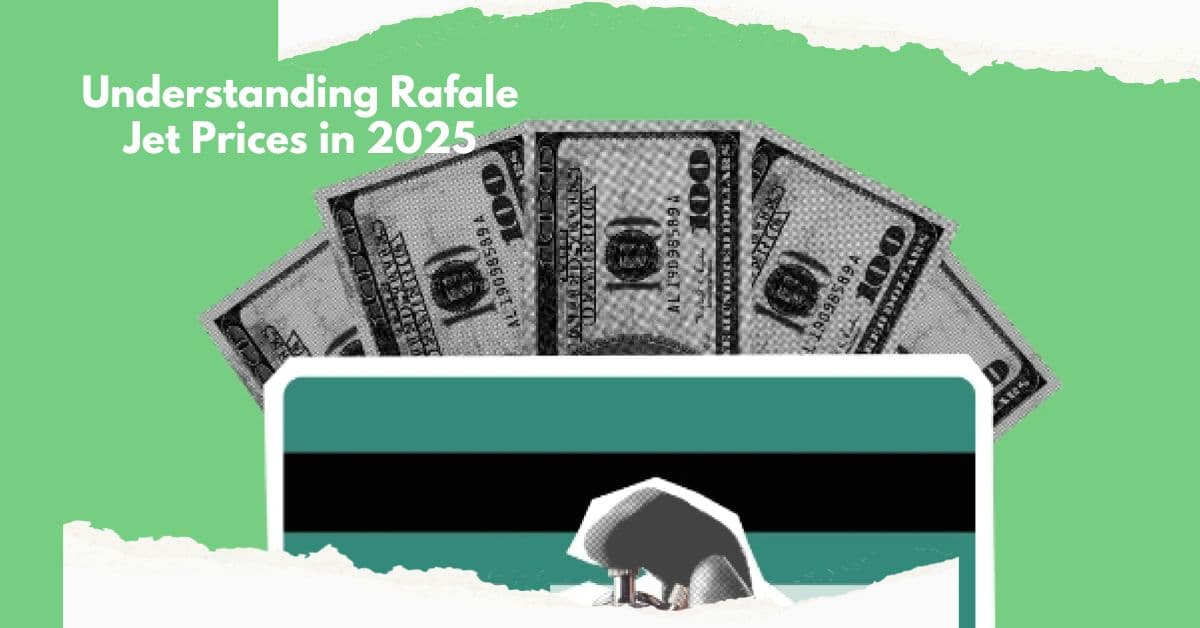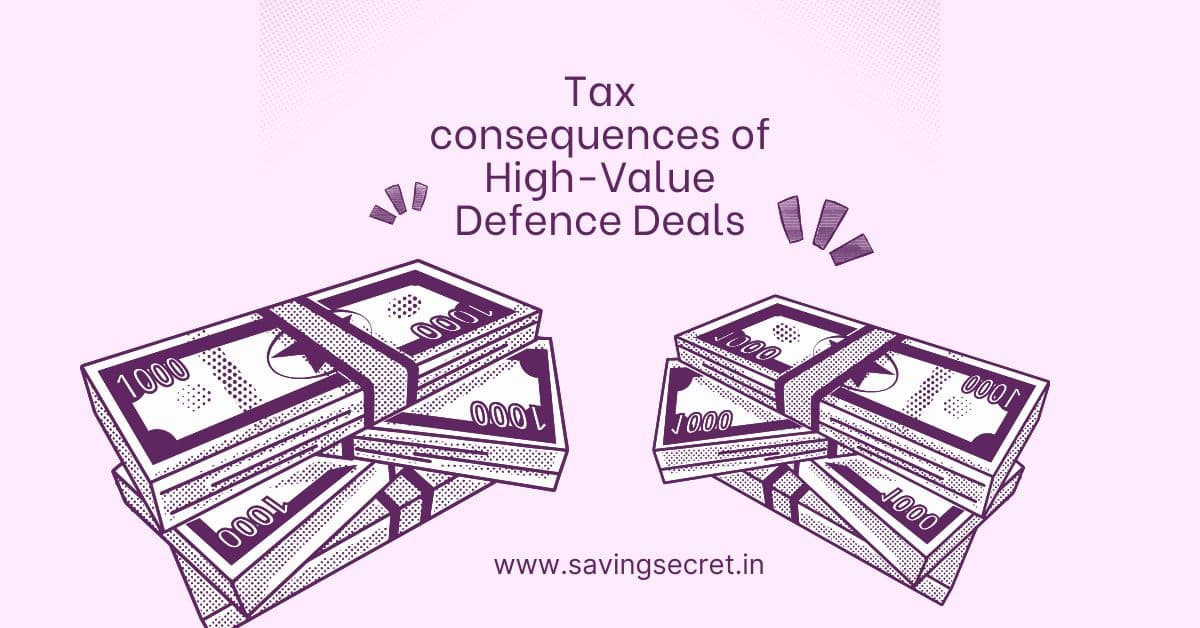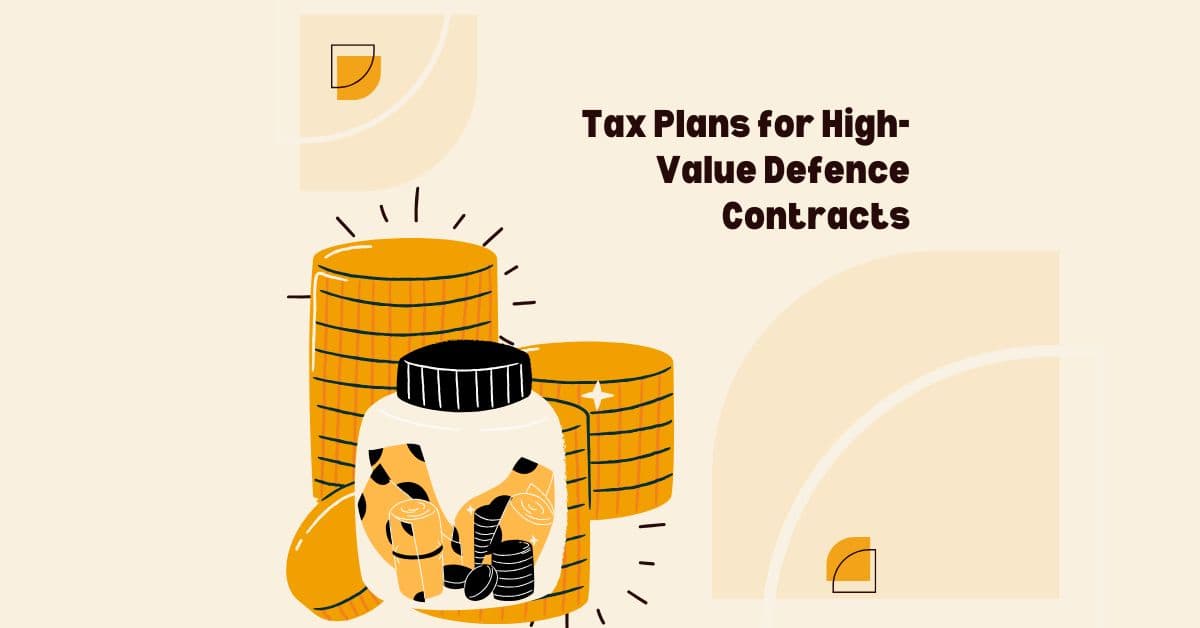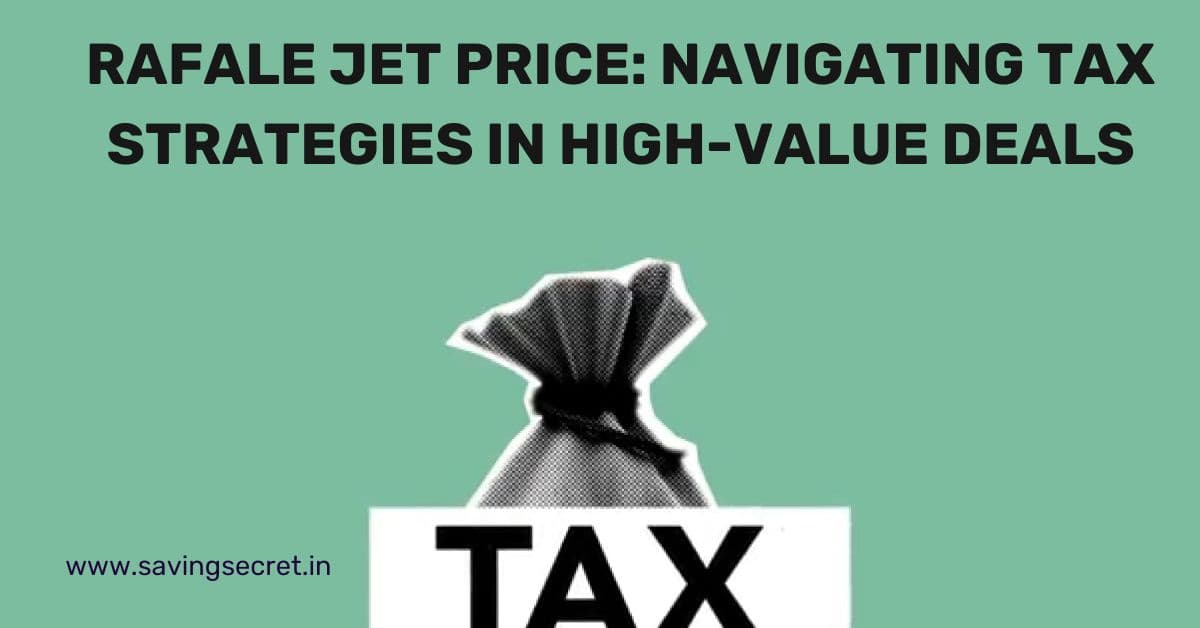Rafale Jet Price: The ₹63,000 crore ($7.5 billion) contract for 26 Rafale-M planes, valued at $288 million (₹2,430 crore) apiece, was signed in April 2025, bringing attention to the Dassault Rafale fighter, a pillar of India’s military policy. The hefty cost of these multirole fighters, which are outfitted with SCALP and Meteor missiles, raises important concerns over tax ramifications and financial plans for such big agreements as India strengthens its ₹6.81 lakh crore military budget in the face of a projected $5 trillion GDP by 2030. Understanding tax optimisation is crucial for Indian politicians, military companies, and investors managing these high-value contracts in the face of escalating expenses (metro rent: ₹15,000–₹30,000, inflation: 4–6%).
The Rafale jet price, tax techniques for high-value defence transactions, and practical insights for 2025 are all covered in this guide. With its wealth of India-specific context, cost-effective tools, and compliance advice, it enables government officials, defence contractors, and individual investors in Tier-2 towns, Delhi, and Mumbai to optimise value while maintaining regulatory compliance.
Understanding Rafale Jet Prices in 2025
Dassault Aviation’s (EPA: AM) 4.5-generation multirole fighter, the Rafale, is intended for naval operations, air dominance, and ground strikes. India’s Rafale expedition consists of:

- 2016 Deal: 36 Rafale aircraft for the Indian Air Force (IAF) were purchased in 2016 for €7.8 billion (₹59,000 crore), or ₹1,640 crore per fighter, including training, weaponry, and India-specific upgrades (such as cold-start capabilities and helmet-mounted displays).
- 2025 Deal: INS Vikrant and INS Vikramaditya will receive 26 Rafale-M aircraft for the Indian Navy at a cost of ₹63,000 crore ($7.5 billion), or ₹2,430 crore ($288 million) per jet, with delivery scheduled for 2028–2030.
Cost Breakdown (2025 Offer):
- Base Cost: The base cost of each plane (airframe, engines) is about 1,200 crore.
- Weapons: Exocet (₹12 crore/unit), SCALP (₹15 crore/unit), and Meteor (₹10 crore/unit) are the weapons.
- Logistics: Training, simulators, and five-year performance-based support (around 500 crore per plane).
- Improvements: Naval changes (e.g., low-band jammers, wingtip tweaks for INS Vikrant elevators) (200 crore/jet).
- Technology Transfer: Facilities for fuselage manufacture and maintenance (about 500 crore per aircraft).
Context: With over 100 crore UPI users and over 2 crore demat accounts, retail investors and defence enthusiasts in both urban (Bangalore, Pune) and rural (UP, Bihar) areas of India are eager to learn more about these deals, particularly in the wake of Operation Sindoor (May 7, 2025), in which Rafales visited Pakistani terror camps.
Why Is It So Expensive?
- Non-Stealth Design: Detractors claim that the Rafale-M costs $288 million more than stealth competitors like the F-35C, which cost between $110 and $130 million.
- Customisations: Costs are increased by elements unique to India, such as satellite communication and BrahMos-NG integration.
- Geopolitical Premium: The cost is justified by the strategic alliance with France and the defence against China’s naval buildup (60 J-15 fighters, three carriers).
Tax consequences of High-Value Defence Deals
Complex tax mechanisms under both Indian and international laws are a part of high-value transactions like the Rafale acquisition. Important tax factors include:

1. The GST (Goods and Services Tax)
- Application: Under Notification No. 19/2019, defence imports are free from 18% GST; nevertheless, local components, such as DRAL’s fuselage manufacture in Nagpur, are subject to 5–18% GST, depending on the item.
- Impact: Local sourcing is used in the 2025 deal’s technology transfer (such as MRO facilities), which might result in an additional ₹1,000–₹2,000 crore in GST over the course of five to seven years.
- For instance, DRAL’s 51:49 joint venture with Reliance to produce Rafale components is subject to 5% GST on aerostructures, which affects prices.
Context: ClearTax may be used to handle GST compliance for small firms in Maharashtra that supply to DRAL.
2. Duty on Customs
- Exemption: According to Customs Notification No. 50/2017, defence imports covered by Inter-Governmental Agreements (IGAs) are free from basic customs duties of 5–10% and integrated GST of 10%.
- Impact: By avoiding about ₹6,300 crore in tariffs, the Rafale-M deal’s ₹63,000 crore cost lowers per-jet expenses by ₹243 crore.
- Note: 28% tax is applied on non-exempt spare parts and commercial imports (such as Falcon jet parts), which is pertinent to Dassault’s larger activities in India.
Context: Duty exemptions indirectly bolster military expenditures by helping taxpayers in expensive metro areas (30% tax slab).
3. Offset Obligations and Corporate Tax
- Offsets: The 2025 agreement stipulates 50% offset commitments (~₹31,500 crore), which must be met by DRAL’s manufacturing, Thales’ avionics, or Safran’s engine maintenance and repair.
- Tax: Over a ten-year period, DRAL and its partners may have to pay ₹2,000 crore in corporation tax (or 15% under the new manufacturing regime).
- For instance, the Rafale and Falcon components of DRAL’s 2016 ₹100 million investment in Nagpur result in taxable earnings.
Context: Tally can help with tax planning for SMEs in Gujarat and Tamil Nadu that provide offsets.
4. Payment Withholding Tax
- Application: Under the India-France DTAA (Article 12, royalties/technical services), payments made to Dassault (France) for jets, training, or technology transfer are subject to a 10% withholding tax.
- Impact: Approximately ₹6,300 crore in taxes on ₹63,000 crore, although this was mitigated by tax credits from France.
- Mitigation: Under some circumstances, withholding can be lowered to 0–5% when payments are structured through GIFT City’s IFSC.
Context: For DTAA compliance, Delhi-based defence companies choose PwC or EY.
5. Pricing Transfers
- Problem: In accordance with Section 92 of the Income Tax Act and OECD recommendations, Dassault, Thales, Safran, and Indian partners (DRAL, HAL) must use arm’s-length pricing in all of their transactions.
- Impact: Failure to comply may result in fines of 100–300% of the tax avoided, which could increase expenses by ₹500–₹1,000 crore.
- For instance, Thales’ avionics supply to DRAL needs to be in line with international prices, as verified by a KPMG audit.
Context: TaxSutra helps resolve transfer pricing issues for Tier-2 companies in Pune.
Tax Plans for High-Value Defence Contracts
Use these tactics, which are suited for investors, contractors, and legislators, to maximise expenses and compliance:

1. Make Use of GST Exemptions
- How: Negotiate a lower GST (5%) for local manufacture using HSN code 8803 (aircraft parts) and maximise exemptions for defence imports.
- For instance, DRAL’s aerostructures are eligible for 5% GST instead of 18%, saving ₹50 crore yearly.
- Tip: To keep track of input tax credits, use ClearTax’s GST Calculator.
Context: GST refunds improve cash flow for MSMEs in Bangalore that supply DRAL.
2. GIFT City Structured Payments
- How: To save ₹3,150 crore on ₹63,000 crore, route payments to Dassault via GIFT City’s IFSC, which lowers withholding tax to 0–5%.
- For instance, a GIFT City SPV for Rafale payments reduces tax obligations by half.
- Advice: For IFSC structure, consult Deloitte (fee: ₹5–10 lakh).
Context: In line with Aatmanirbhar Bharat, Mumbai-based companies manage defence contracts through GIFT City.
3. Make the Most of Offset Investments
- How: Direct offsets towards industries that qualify for a 150% weighted deduction under Section 35(2AB), such as R&D and skill development.
- For instance, Safran’s MRO facility in Hyderabad claims ₹100 crore in tax deductions, which results in a ₹25 crore reduction in liabilities.
- Tip: To keep tabs on offset-related costs, use TallyPrime.
Context: Offset-driven FDI boosts the defensive corridor in Tamil Nadu, generating over 10,000 employment.
4. Reduce the Risk of Transfer Pricing
- How: To avoid fines, conduct benchmarking studies to bring DRAL-Thales transactions into compliance with international standards.
- For instance, Thales’ radar supply, which costs $10 million per unit, is in line with Qatar’s prices, guaranteeing compliance.
- For transfer pricing audits, hire Grant Thornton (₹2–5 lakh).
Context: Taxmann provides compliance advice to SMEs in Uttar Pradesh that offer avionics.
5. Make Use of R&D Tax Benefits
- How: Under Section 35(1)(i), Dassault’s partners (DRDO, HAL, etc.) are eligible to claim a 100% R&D deduction for Rafale improvements (e.g., BrahMos-NG integration).
- For instance, DRDO saves ₹125 crore in taxes on its ₹500 crore R&D expenditure.
- Advice: To claim deductions, submit Form 3CL through the Income Tax Portal.
Context: Hyderabad’s defence laboratories assist Made in India by utilising R&D advantages.
6. Make use of APAs, or advance pricing agreements
- How: To lower audit risks, pre-approve price for Dassault-DRAL transactions by negotiating APAs with CBDT.
- For instance, an APA for Thales’ avionics delivery avoids fines of ₹200 crore.
- For APA filings, use EY (₹10–20 lakh).
Context: To expedite international transactions, military companies located in Delhi employ APAs.
7. Make an Investor Plan
- How: Through Section 54F (property investment), retail investors in Dassault (EPA: AM, ₹26,500/share) can deduct 15% of the LTCG tax (beyond ₹1.25 lakh).
- For instance, investing ₹50,000 in Dassault (0.19 shares) at a 15% compound annual growth rate (CAGR) can result in ₹1.03 lakh by 2030, with ELSS funds providing tax savings.
- Use ClearTax for LTCG planning and Groww for international stock investing.
Context: Pune’s young professionals invest in military equities to finance their educational aspirations (₹5–15 lakh).
Risks and Challenges
- High Costs: Cost-effectiveness issues are raised by the Rafale-M’s $288 million per jet compared to the F-35C’s $130 million.
- Tax Audits: Failure to comply with transfer pricing may result in 300% fines and expenses of ₹1,000 crore.
- Geopolitical Risks: De-escalation between India and Pakistan might lower demand for Rafale, which would affect offsets.
- GST Complexity: Cash flow is strained for local providers due to delays in input tax credits.
- Currency fluctuations: Payment planning is impacted by the INR-EUR volatility (1 EUR ~ ₹89).
Solutions:
- Use Screener.in to compare prices for international standards.
- For updates on GST and transfer pricing, see TaxSutra.
- Use Zerodha to diversify your portfolio by purchasing Indian military equities (HAL, BEL).
Context: SBI and PNB bank branches are the primary source of GST refunds for Rajasthan’s rural vendors.
Resources and Tools
- Tax Tools: ClearTax, TallyPrime, and TaxSutra for GST and ITR are examples of tax tools.
- Investment platforms: include Groww and Dassault share interactive brokers.
- Calculators: The Tax and Investment Calculators of BankBazaar.
- Compliance: PwC and Taxmann for transfer pricing and DTAA.
- Learning Resources: YouTube (CA Rachana Ranade), SEBI, and NSE India.
- Community: Zerodha Varsity, r/IndiaInvestments.
Context: Tier-2/3 stakeholders are supported via SBI’s 17,000+ branches and Hindi applications (Groww, Moneycontrol).
Conclusion
India’s strategic defence needs are reflected in the Rafale jet’s 2025 price of ₹2,430 crore per unit, but its tax consequences necessitate astute planning. Use R&D deductions, GIFT City contributions, and GST exemptions to save between ₹5,000 and ₹10,000 crore. Use benchmarking and APAs to reduce risks, and use Groww to investigate Dassault stock (EPA: AM) for potential retail gains. Using ClearTax and Tally, stakeholders in Mumbai, Delhi, or rural Uttar Pradesh may maximise high-value trades thanks to India’s ₹6.81 lakh crore military budget and its 100 crore+ UPI users. To guarantee value and compliance, stay informed with Economic Times.
Call to Action: Invest ₹5,000 in Dassault through Interactive Brokers, and use ClearTax to arrange GST refunds. Leave a comment with your plan!
Home Loan Interest Rates of HDFC Bank Drop – Will Your EMI Go Down?
LIC Cancellation Form: Here’s the Tax Strategy You Need in 2025
Equity Trading & Taxes in India: What Every Investor Must Know!

